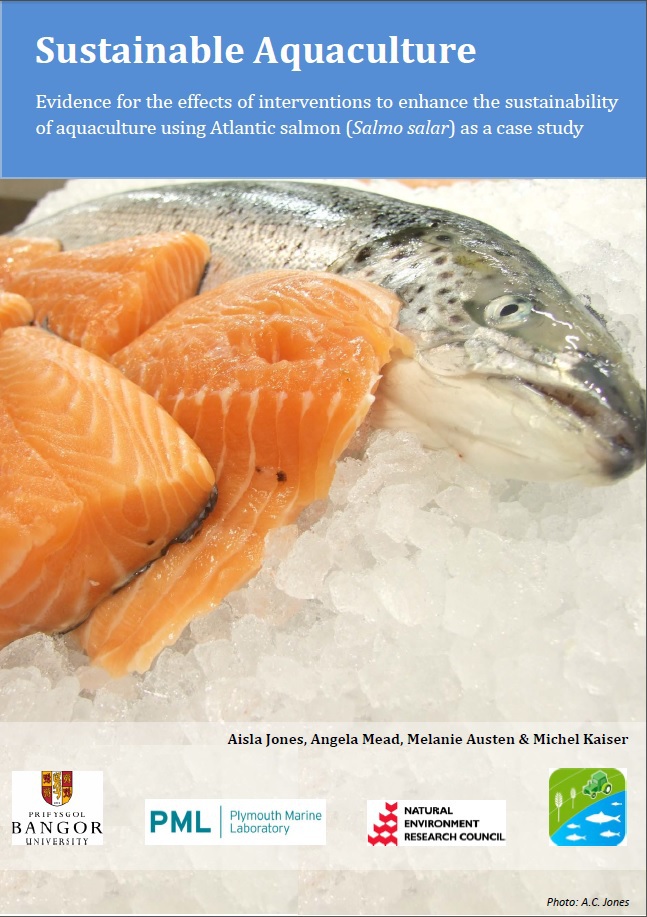Use an alternative protein source: animal
-
Overall effectiveness category Awaiting assessment
-
Number of studies: 2
View assessment score
Hide assessment score
How is the evidence assessed?
-
Effectiveness
not assessed -
Certainty
not assessed -
Harms
not assessed
Study locations
Supporting evidence from individual studies
A controlled, replicated study in British Columbia, Canada (Wilson et al., 2007) found no differences in oxygen consumption or swimming speed of Atlantic salmon that were fed diets with different dietary lipid sources. There were similar swimming speeds (0.69- 0.76 m s-1) and oxygen consumptions (MO2 max 7.31± 0.24 mg O2 kg−1 min−1) for the five dietary treatments. Five experimental diets containing 45% protein and 26% lipid) were each fed to 150 Atlantic salmon (across three tanks) for 24 weeks. The control diet contained 100% anchovy oil and in three diets 75% of the anchovy oil was replaced by poultry fat, cold pressed flaxseed oil, or crude super de-gummed canola oil. The fifth diet contained a 1:1 blend of anchovy oil and poultry fat and the protein component was a 1:1 blend of fishmeal and poultry by-product meal. After 24 weeks on the experimental diets, ten fish of similar weight from each trial were tested by measuring oxygen consumption rates, prolonged swimming performance, and recovery from exhaustive exercise in a closed circuit respirometer over a seven week period.
Study and other actions testedBetween 2007 and 2008, a controlled, randomised, replicated trial in Scotland (Pratoomyot et al., 2011) found that Atlantic salmon fed alternative protein to fishmeal had lower final weights than fish fed a fishmeal diet. The final weight of the groups fed fishmeal diets was 3.8kg compared to between 3.4 and 3.6kg in fish fed alternative protein diets. Five diets were formulated to satisfy the nutritional requirements of salmonid fish; the four experimental diets contained 11% fishmeal and 55% of either wheat gluten, pea protein, blood meal or kidney bean. A control diet containing 25% fish meal was also given to one group. Two thousand two hundred and fifty Atlantic salmon were fed the experimental diets by automatic feeders for nineteen weeks.
Study and other actions tested
Where has this evidence come from?
List of journals searched by synopsis
All the journals searched for all synopses
This Action forms part of the Action Synopsis:
Sustainable Aquaculture
Sustainable Aquaculture - Published 2013
Atlantic salmon Aquaculture Synopsis





)_2023.JPG)














